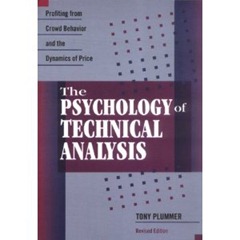 The greatest constraint on taking the right action in any market is doubt.
The greatest constraint on taking the right action in any market is doubt.
Indicators of investor behaviour
Volume and Open Interest
Volume is a direct measure of the amount of activity taking place in the market. Open interest is a cumulative measure of the unclosed bull positions in a particular futures market.
The level of Volume: The level of volume is indicative of people’s willingness to trade and reflects their attitudes to the market. A low level of volume indicates an unwillingness to open new positions and close old ones and reflects uncertainty about the future direction of the market. On the other hand, a high level of volume indicates a high degree of confidence in the future direction of the market.
The level of Open Interest: The level of OI is indicative of the liquidity of the market. if OI is low, then there are very few profits to be taken or bad positions to be closed. At low levels of OI, the market is illiquid and a new trade is likely to move the market.
Sudden changes in Volume and Open Interest: A sudden change in volume or OI is indicative of a change in the price-sentiment relationship.
Direction of change in Volume and Open Interest: Rising volume suggest a growing awareness of a higher-level trend and rising OI indicates a growing commitment to that trend. Falling volume indicates the unwillingness to pursue the immediate trend and falling OI suggests some reversal of sentiment.
Re-tests
A re-test is considered successful if prices move into new territory. If volume and OI do not rise into high ground, then a non-confirmation takes place and an important trend reversal is about to emerge (doubly true if OI falls as well). If both volume and OI fall as prices move into new territory, then the following price reversal could be quite dramatic. Falling OI, especially with higher volume, portends a sharp reversal in prices.
Momentum
A momentum index is a measure of the speed of change of the market. It can be a
- simple percentage rate of change,
- a deviation from a moving average, or
- the relative strength index (RSI)
The biggest draw-back of momentum indices is that non-confirmation only generates a signal when prices themselves actually start to reverse.
The Advance-Decline Index
The A/D index is a simple ratio of the number of stocks that have advanced to the number of stocks that have declined. It acts as a proxy for the internal strength of the market. Hence, if a market price index moves into new ground but the A/D doesn’t follow suit, then the life expectancy of the movement may be limited and a severe setback may ensue.
This is one of a series of posts reviewing The Psychology of Technical Analysis by Tony Plummer.
